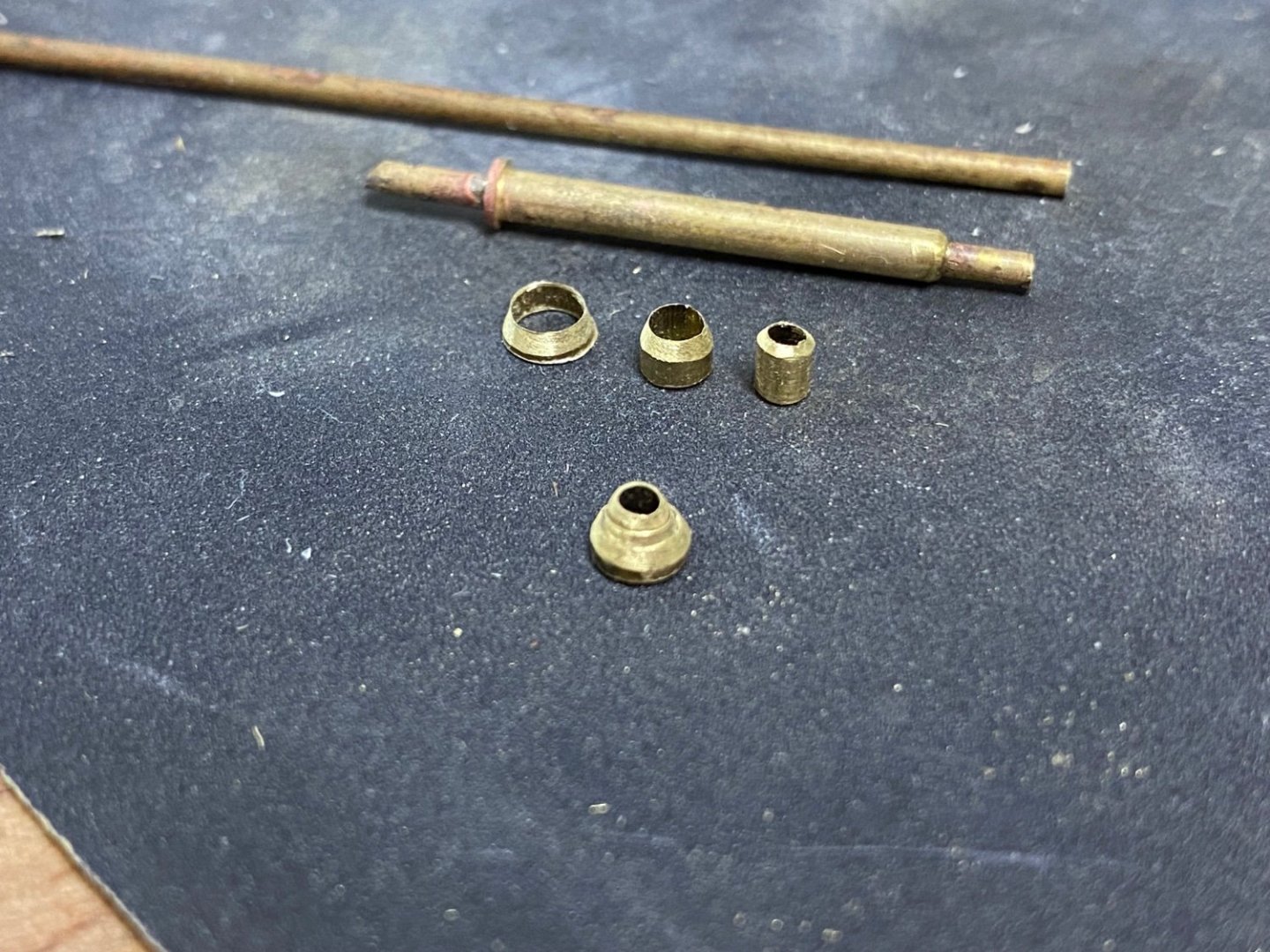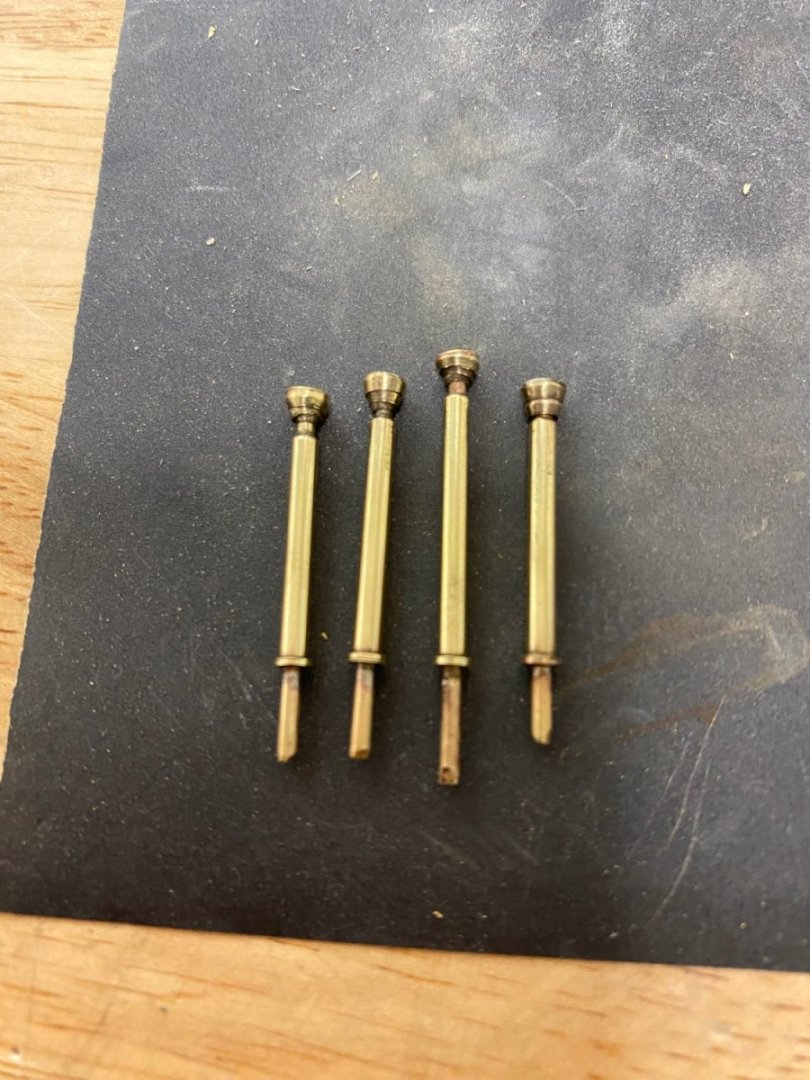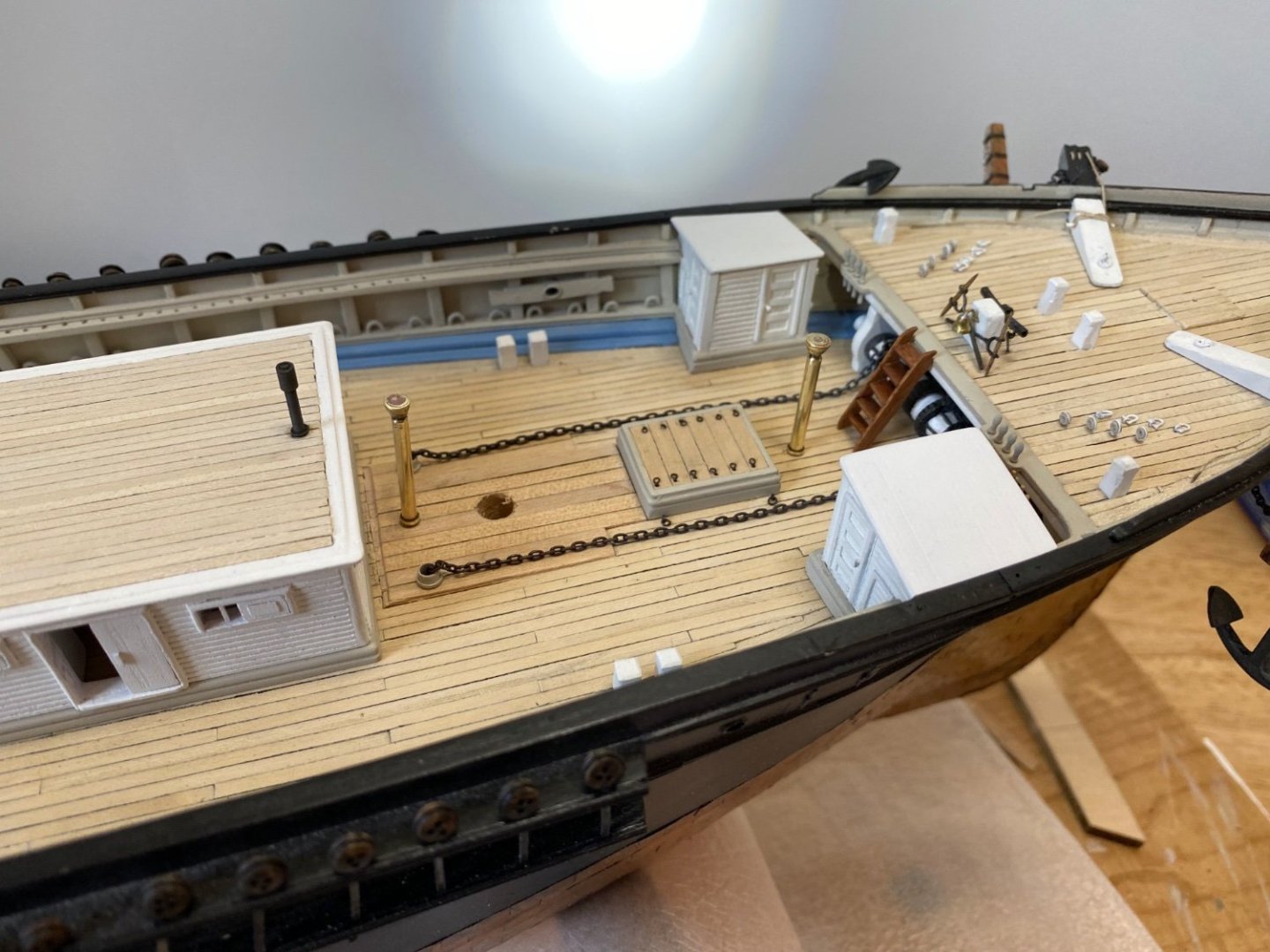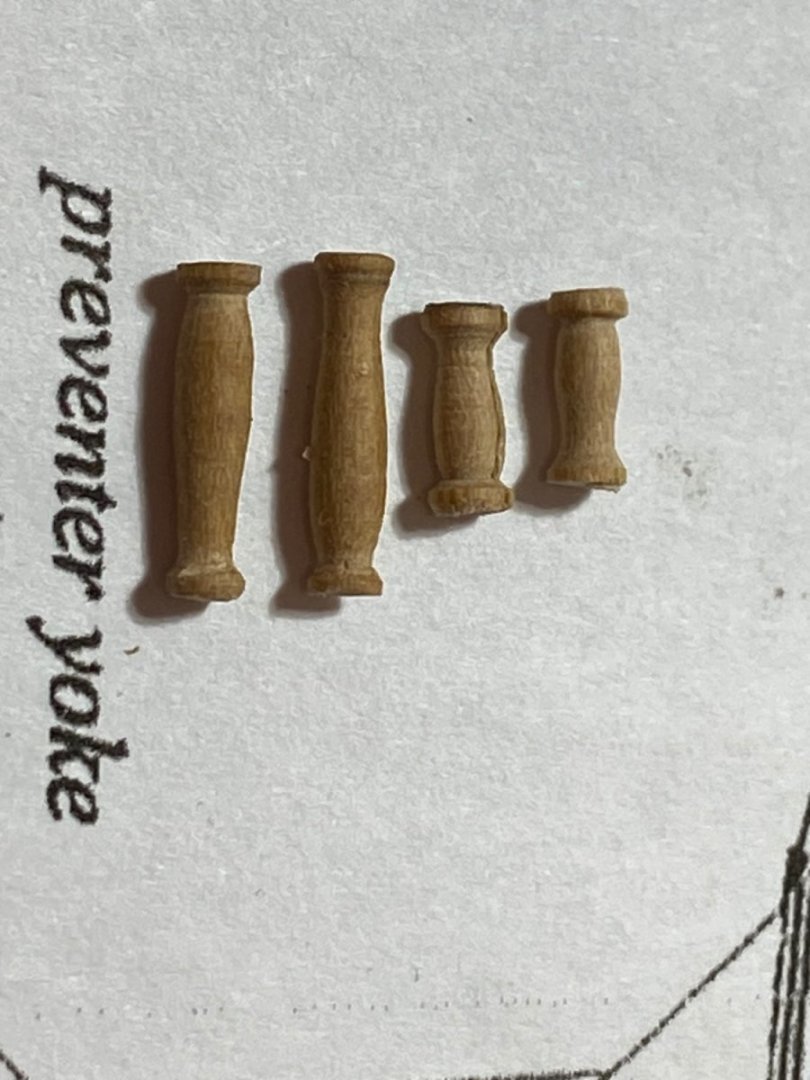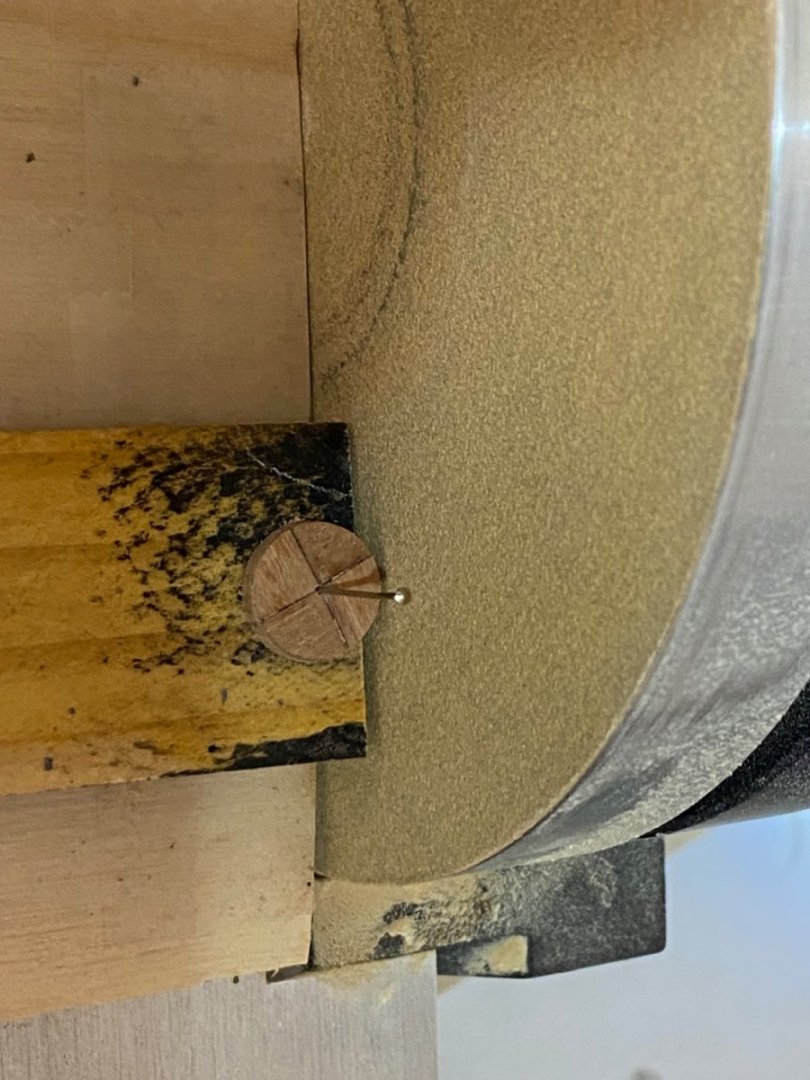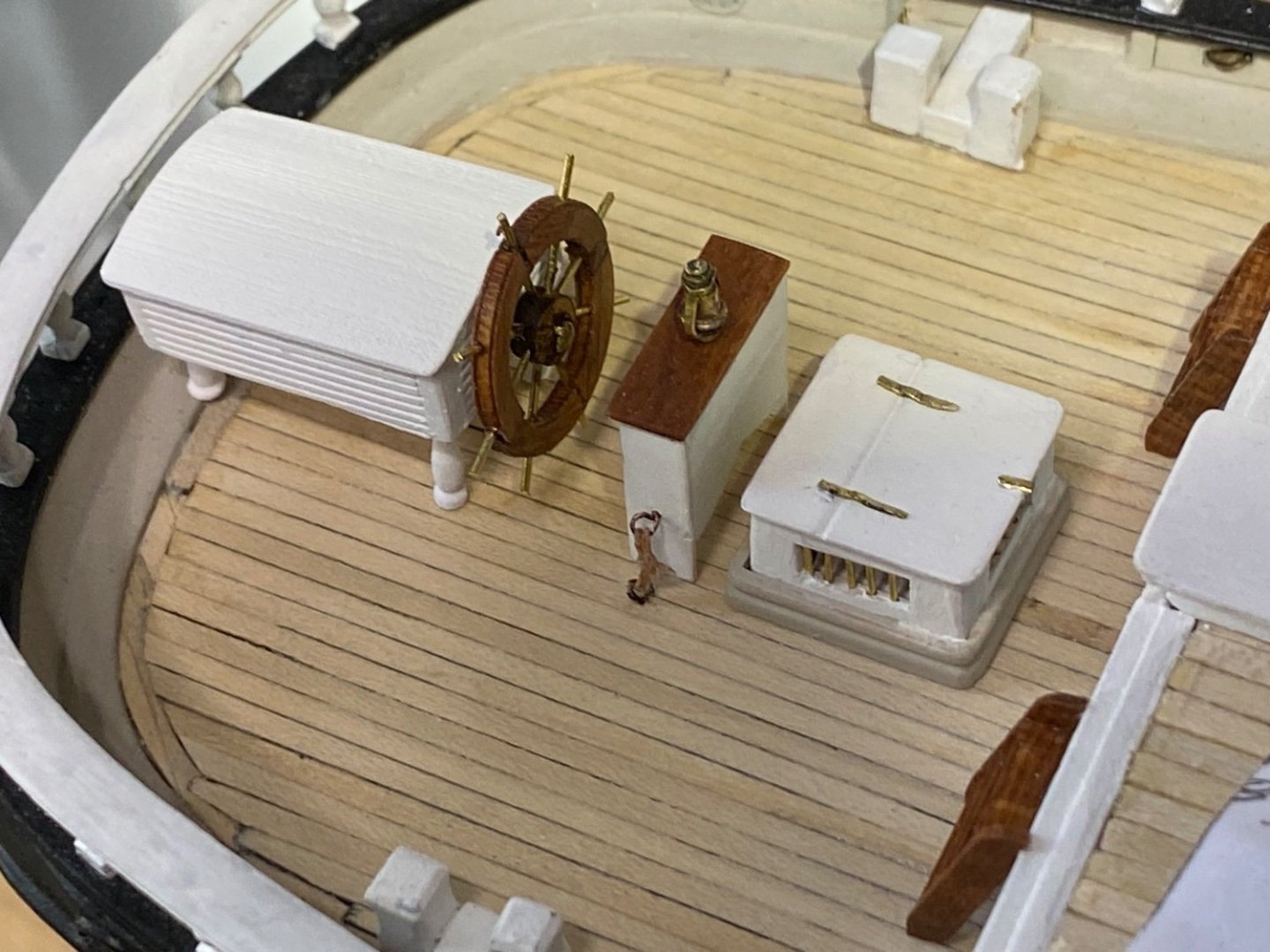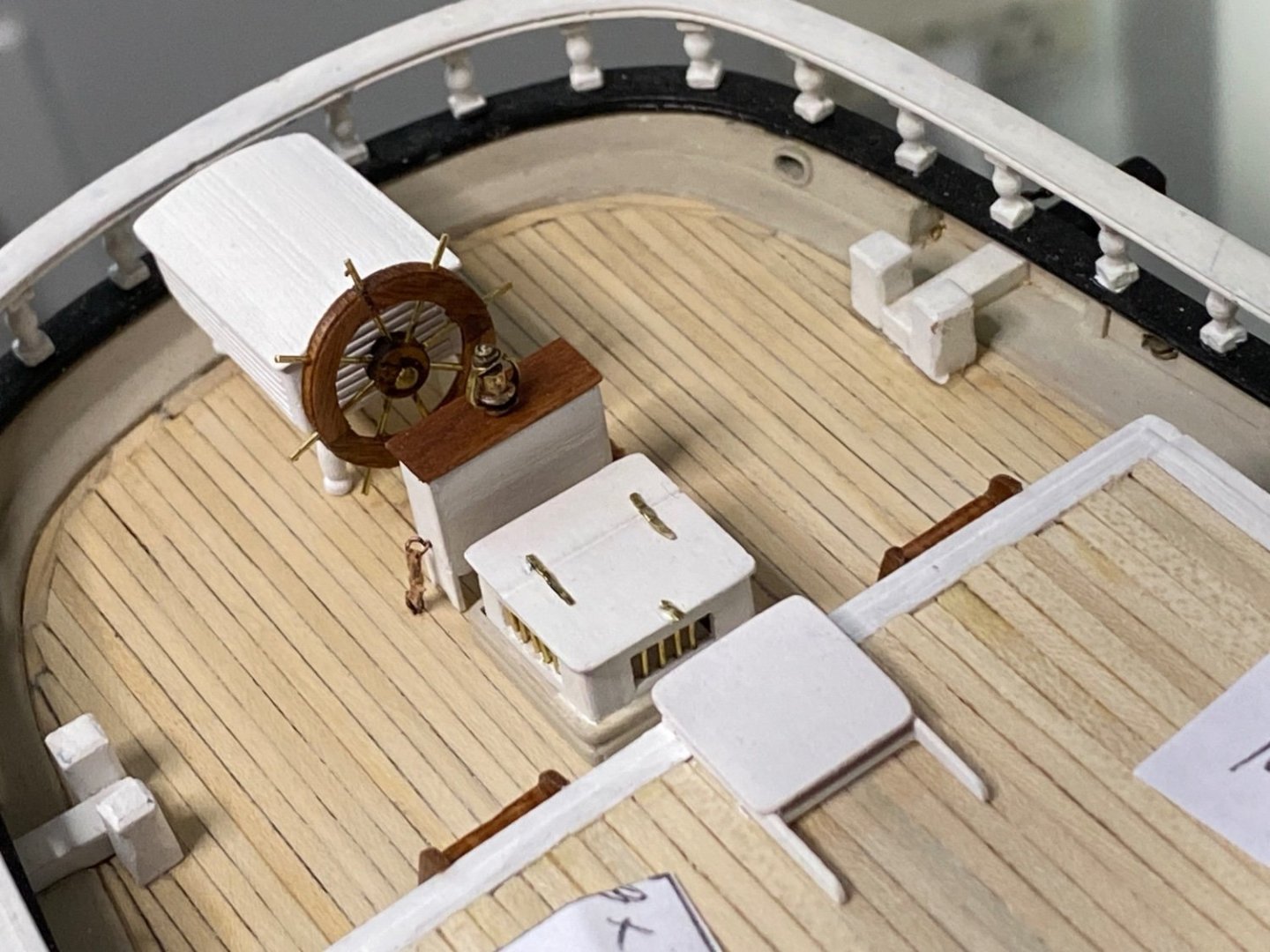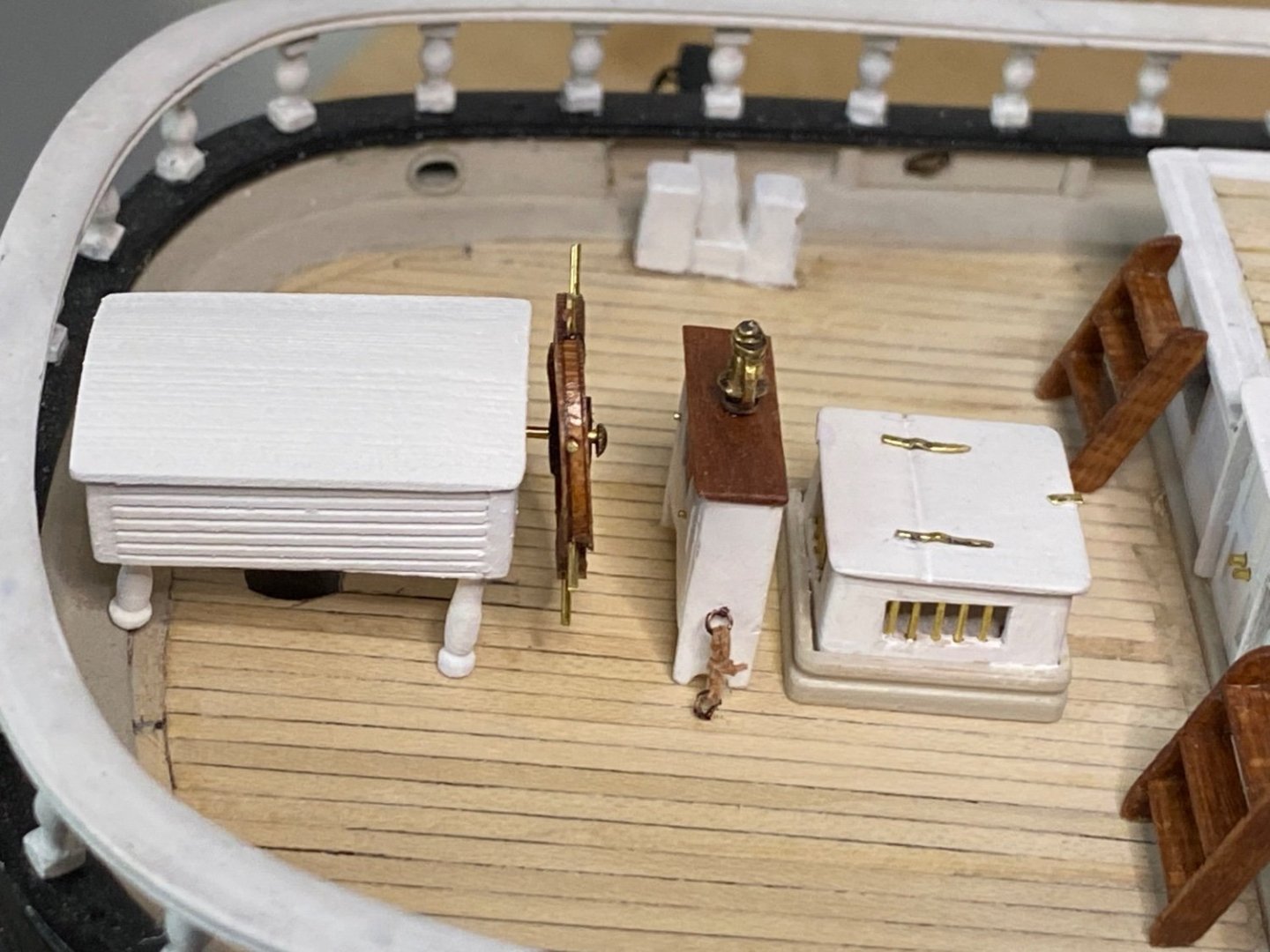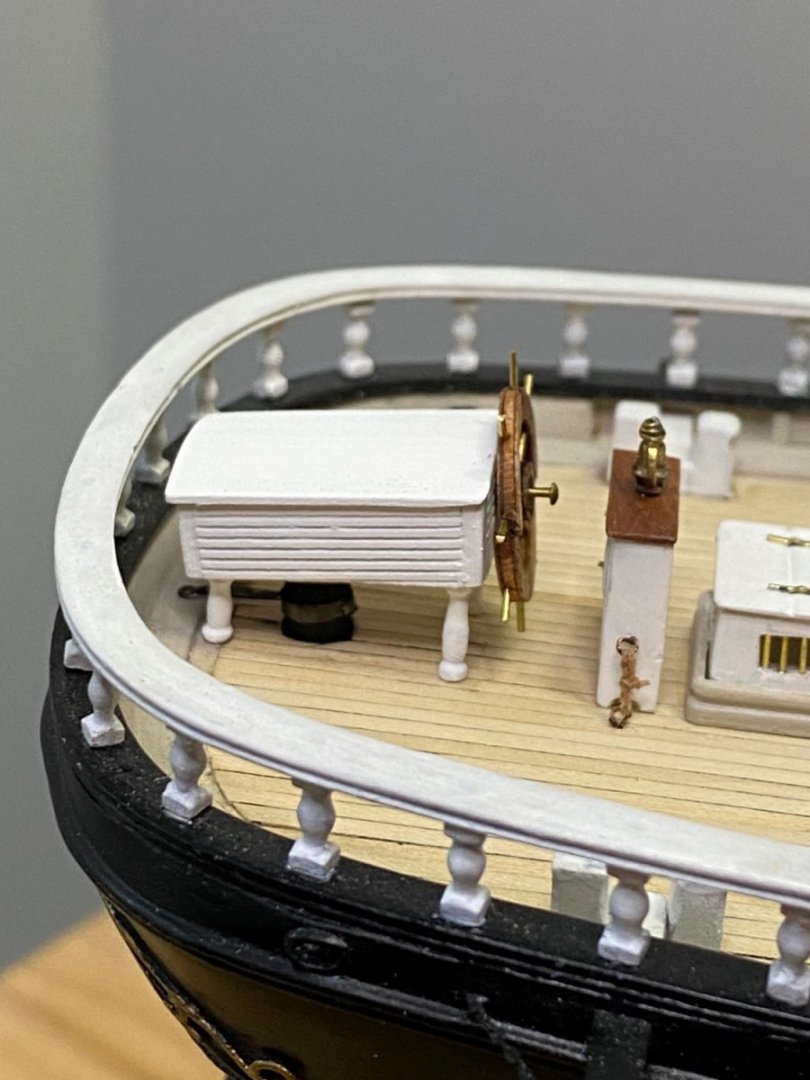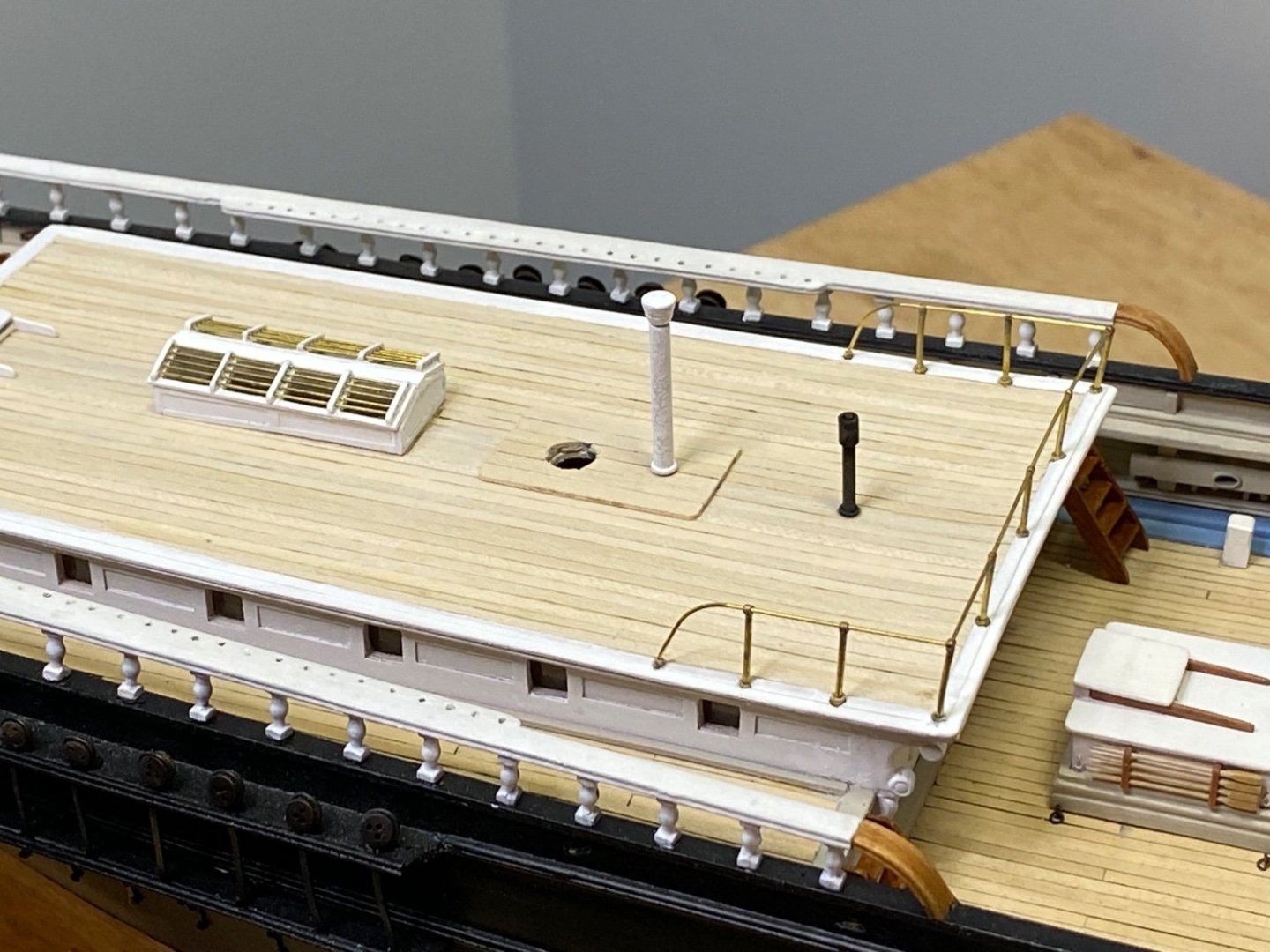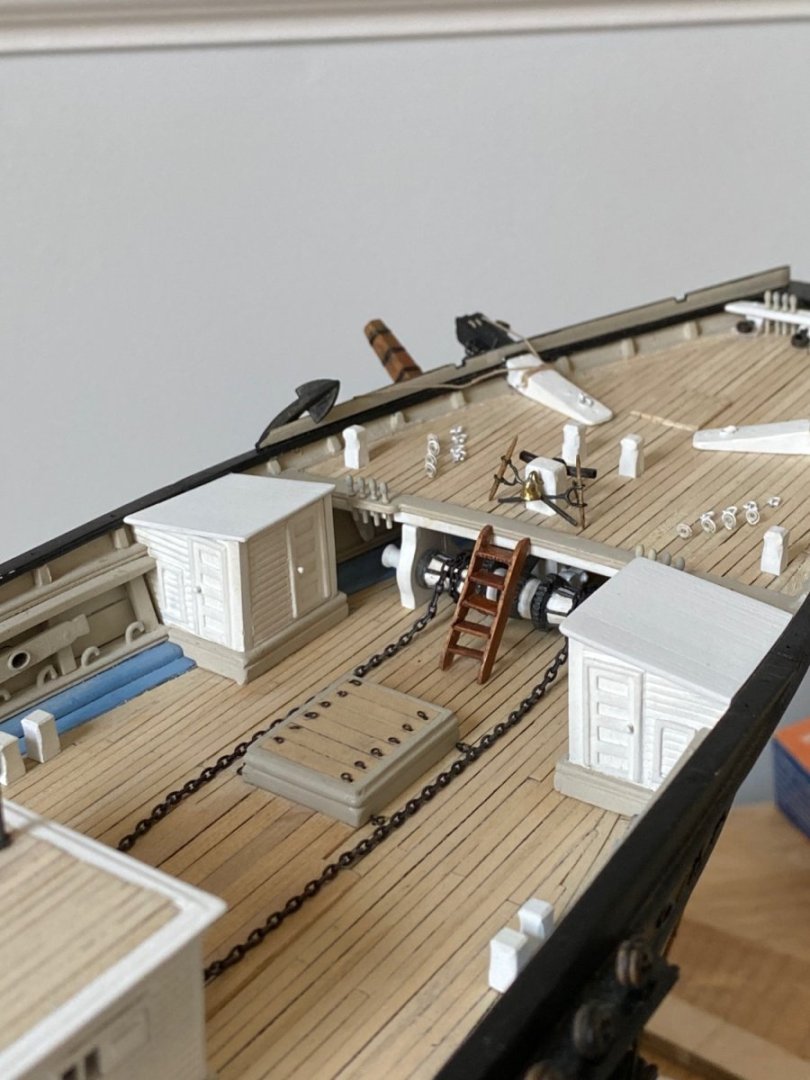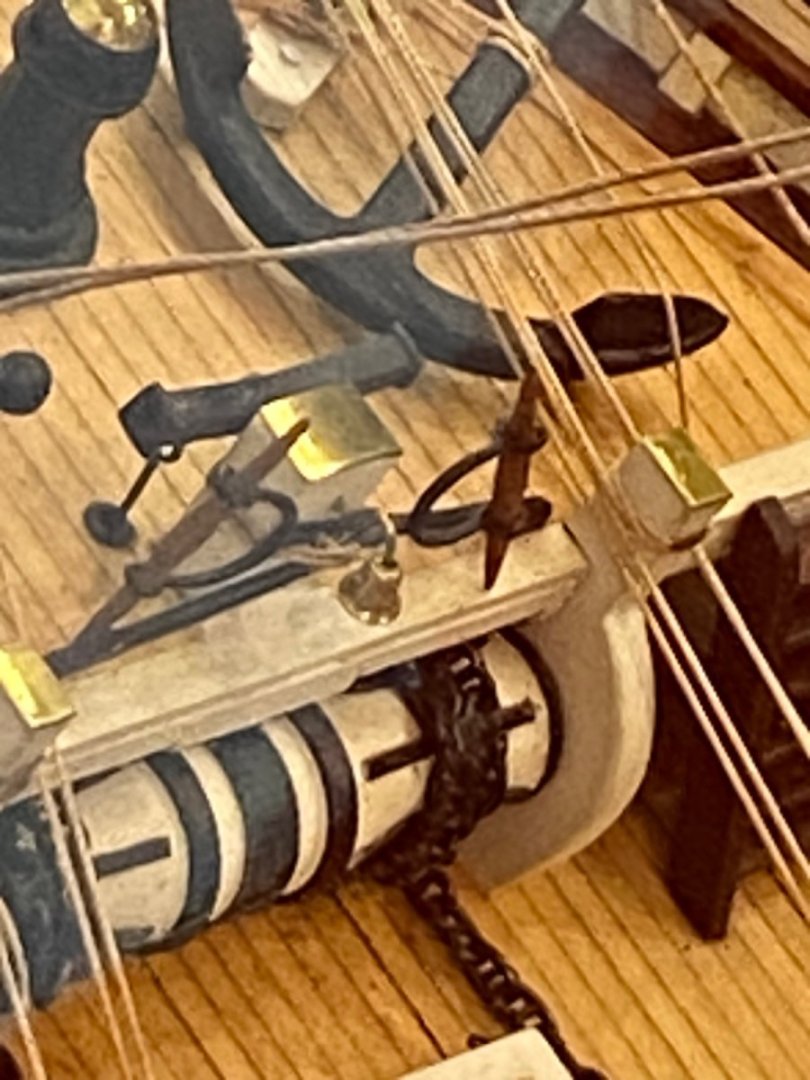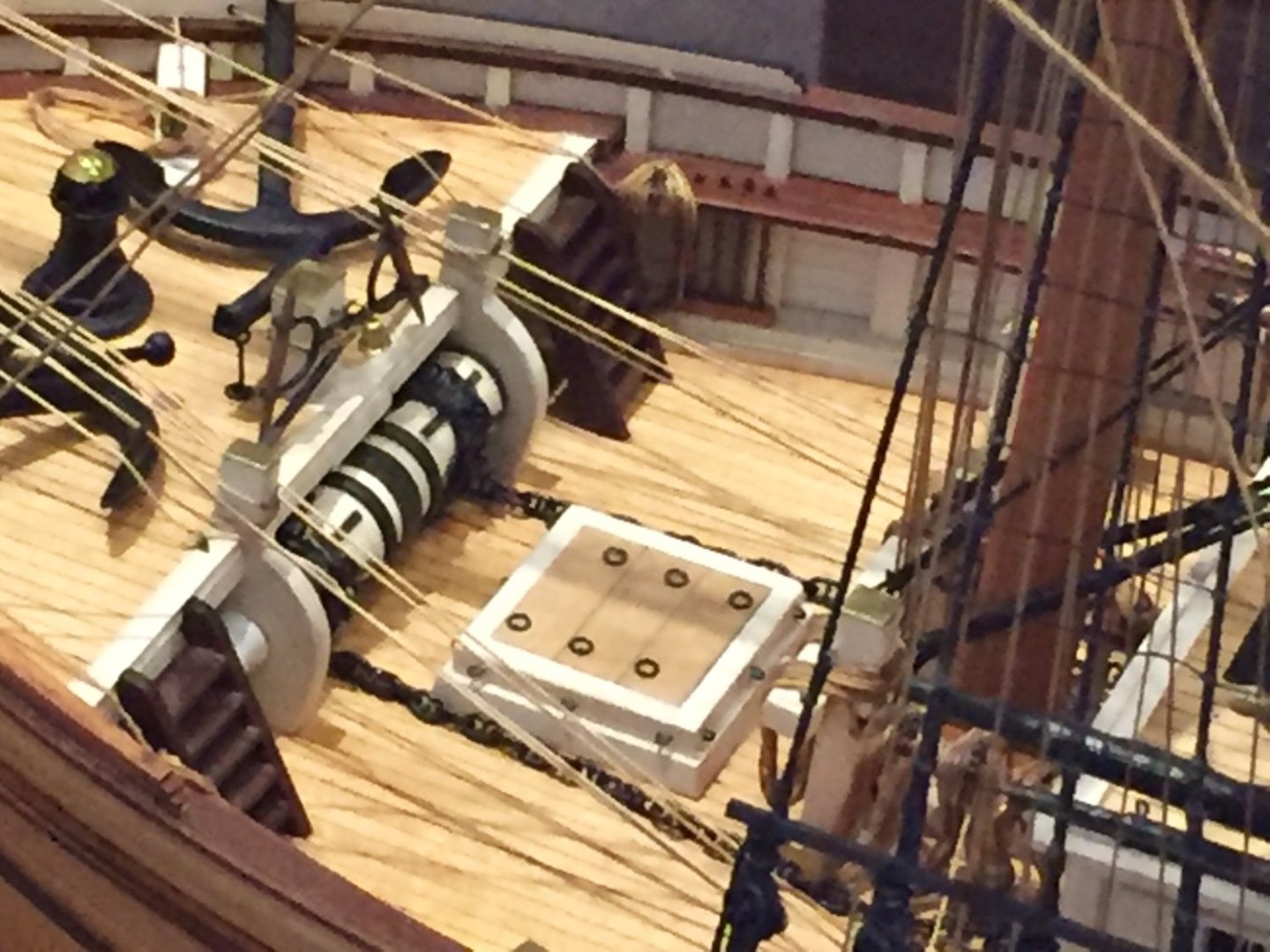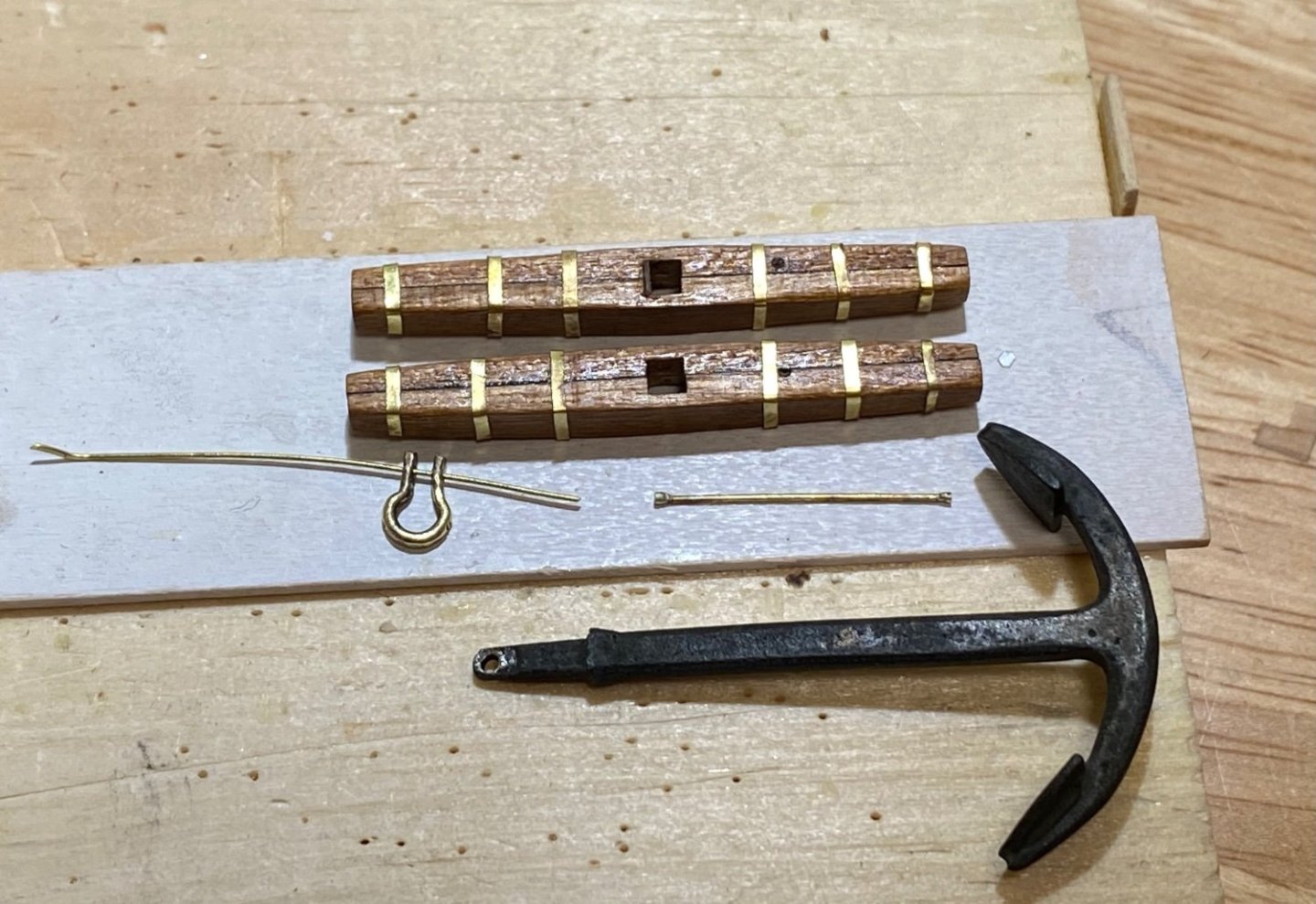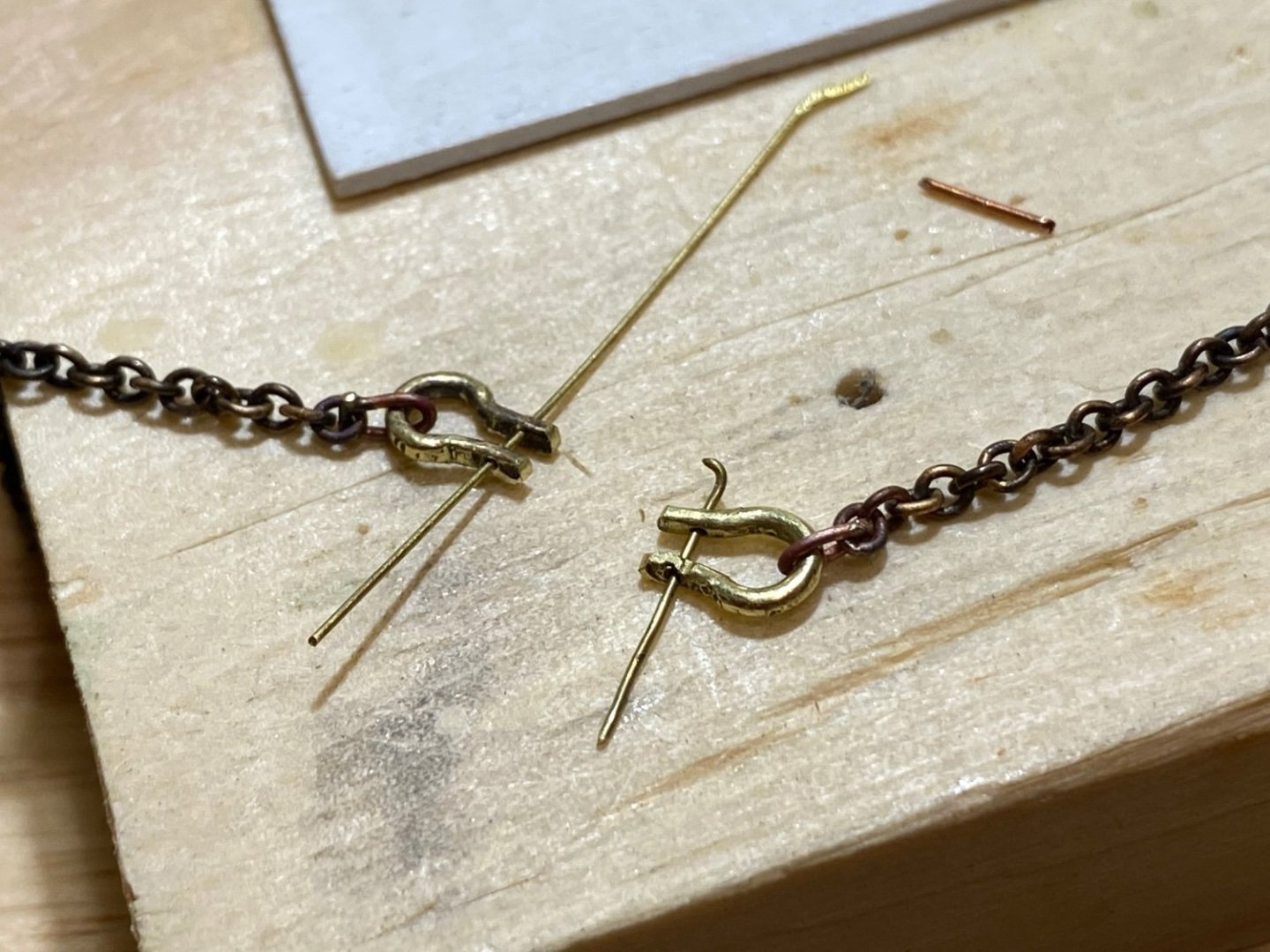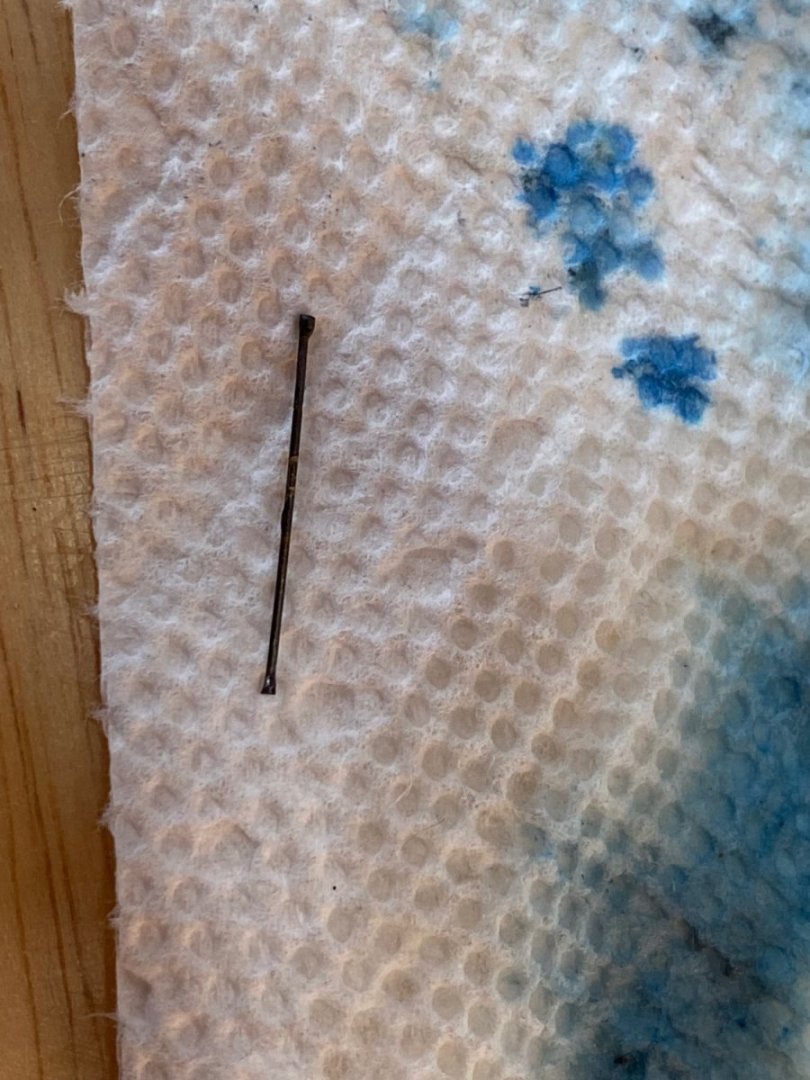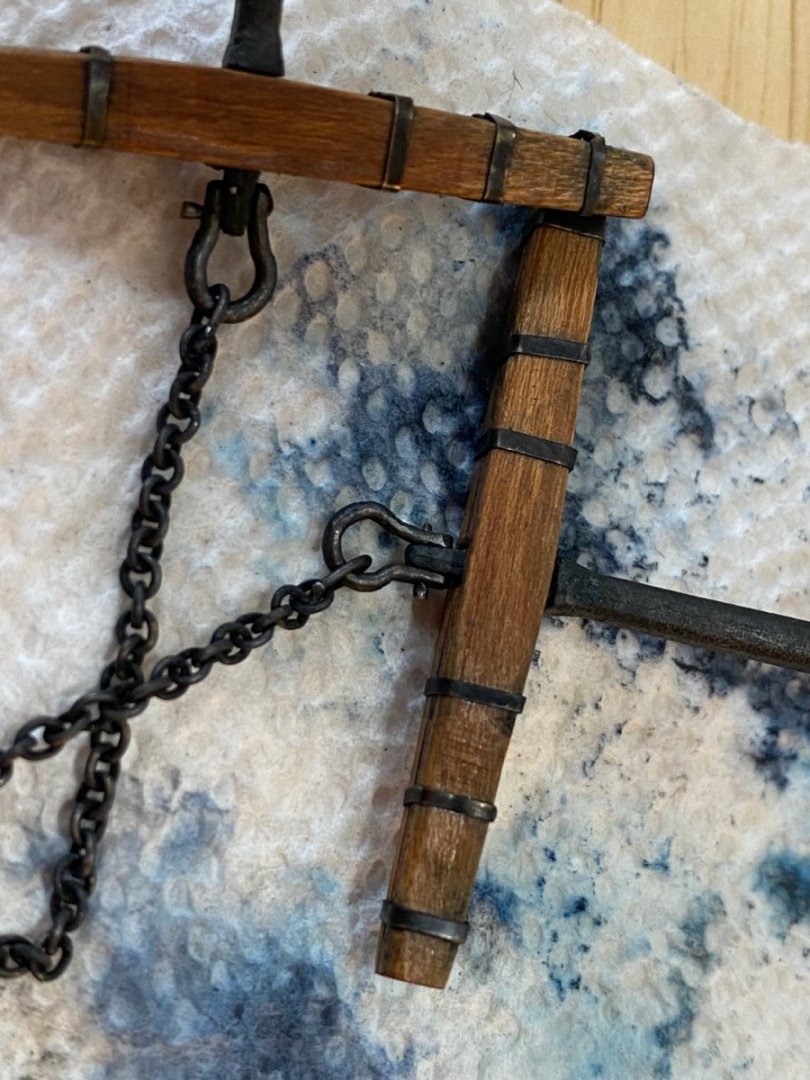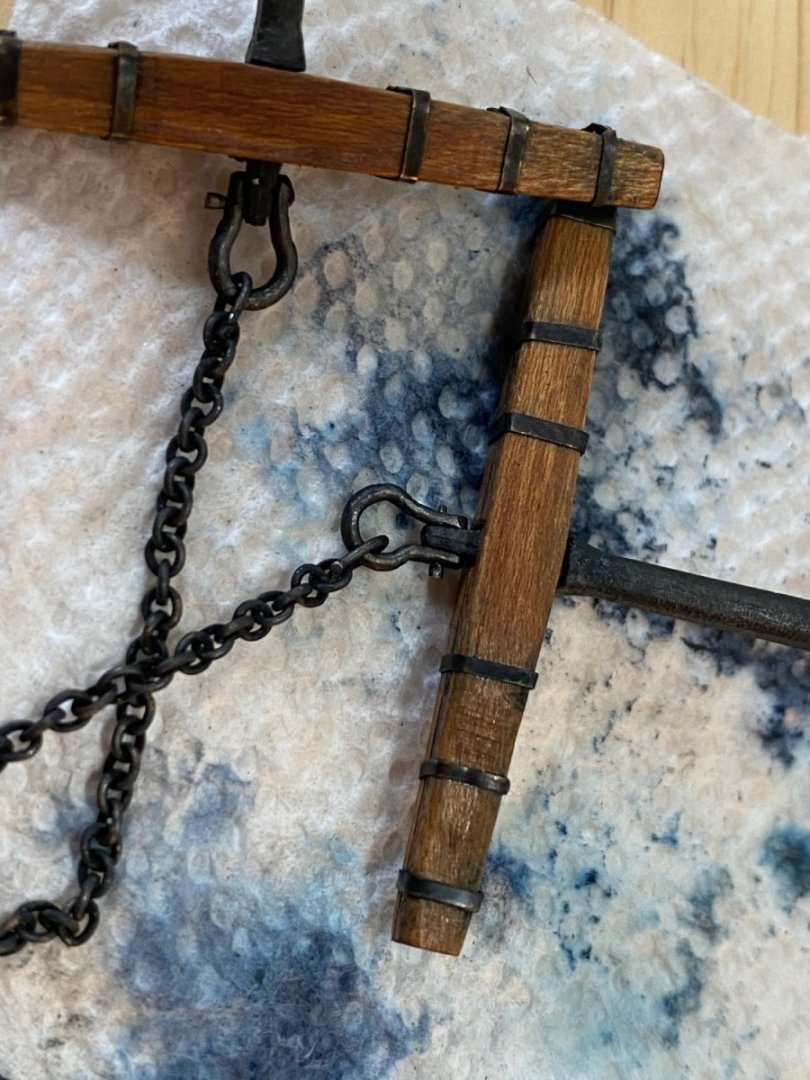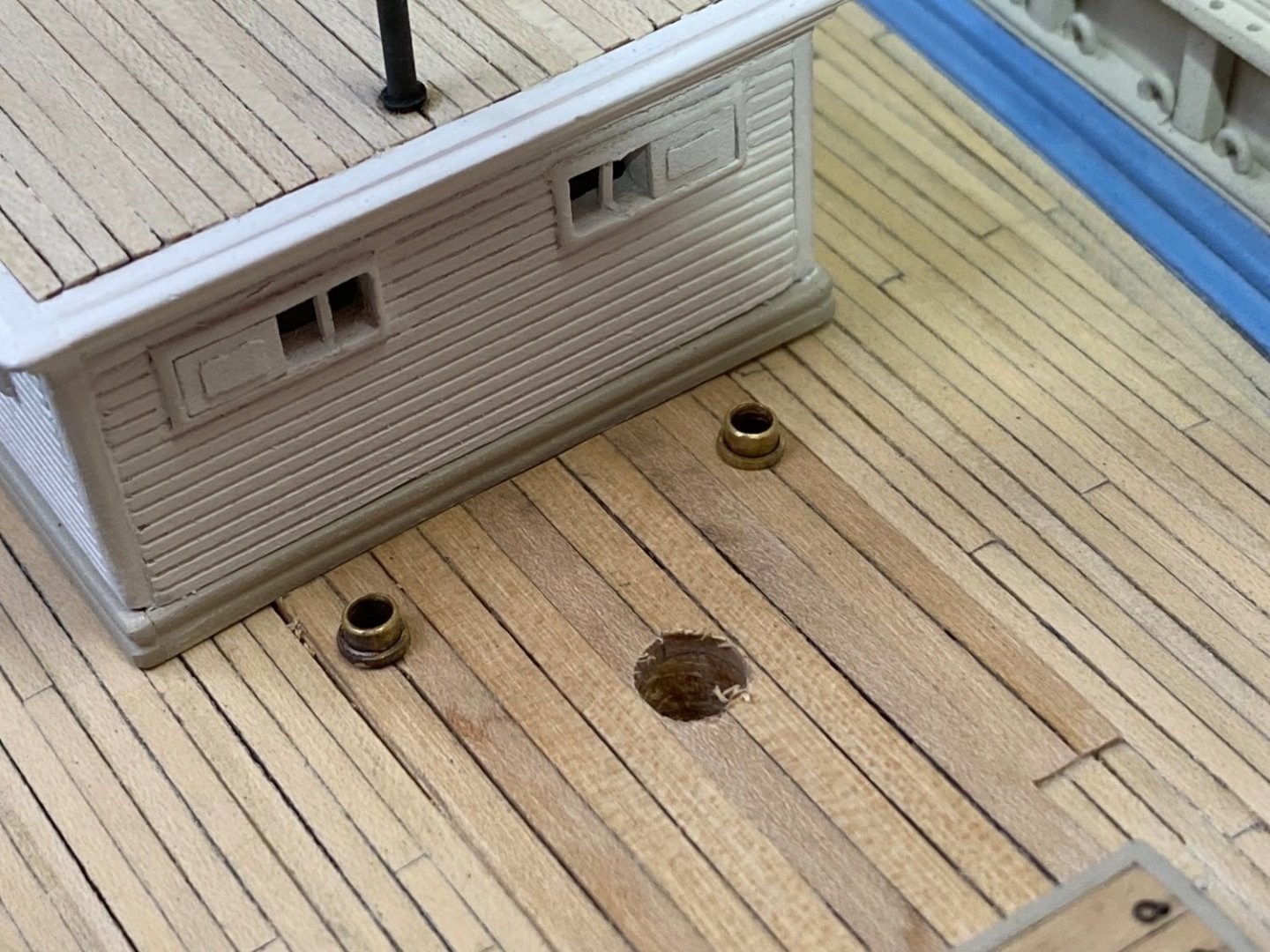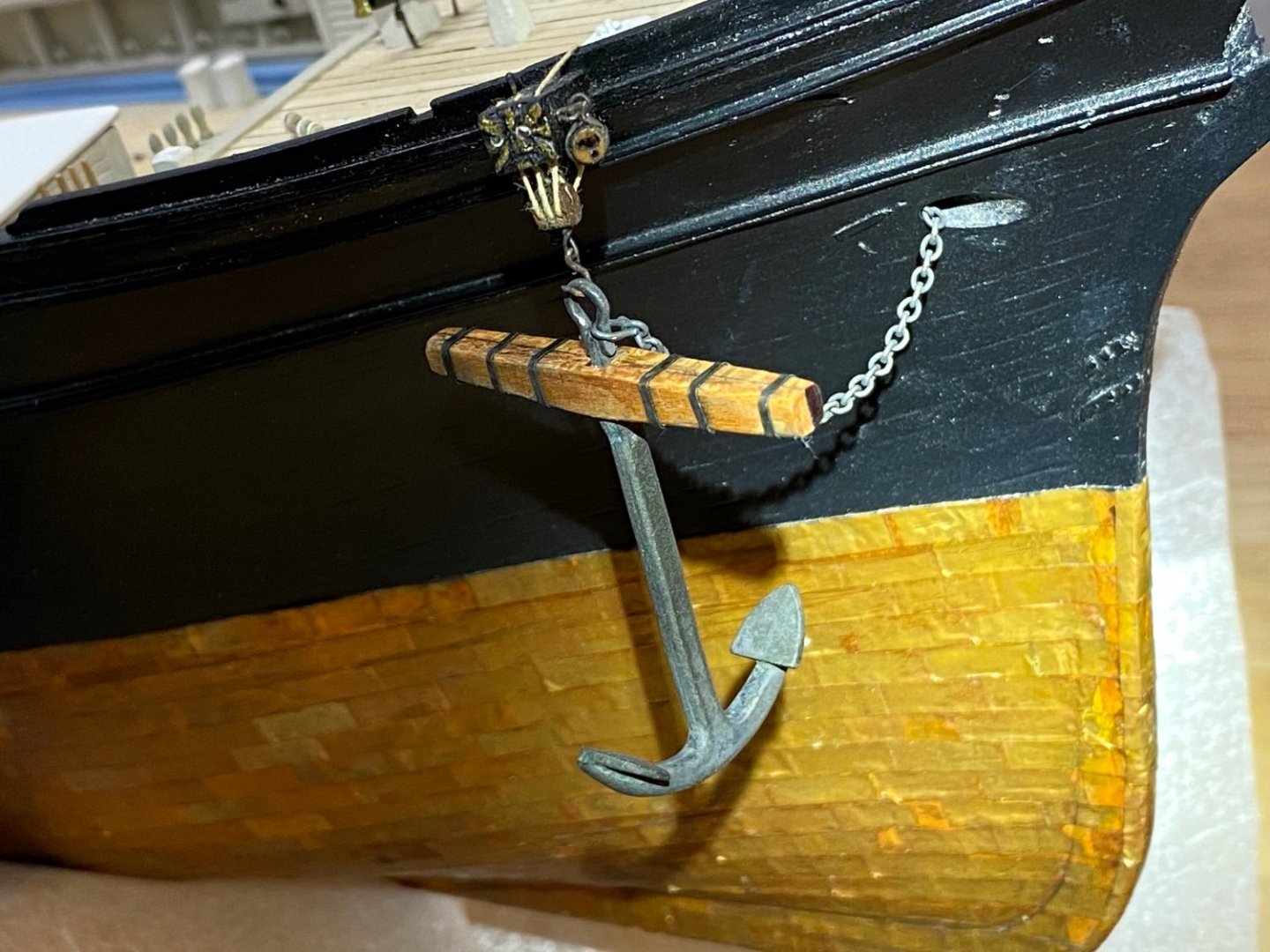
Rick310
NRG Member-
Posts
753 -
Joined
-
Last visited
Content Type
Profiles
Forums
Gallery
Events
Everything posted by Rick310
-
Thanks George, that’s great advice, shrouds aft to fore, yards fore to aft. Rick
- 602 replies
-
- Flying Fish
- Model Shipways
-
(and 2 more)
Tagged with:
-
Really looks great George!! I’m planning on rigging the mizzen first. Since you did the foremast first, what are your thoughts? Rick
- 602 replies
-
- Flying Fish
- Model Shipways
-
(and 2 more)
Tagged with:
-
It’s really coming along!! Well done!! Rick
- 602 replies
-
- Flying Fish
- Model Shipways
-
(and 2 more)
Tagged with:
-
Pat, thank you for your kind words and encouragement, it’s greatly appreciated. When I decided, after a long absence, to start working on the model again I told myself to either finish the model and use it as a learning experience to make wood ship models or get rid of it and stop torturing myself because it wasn’t going to be “museum quality “. I even went so far as to purchase the POB version so I could build one that I was satisfied with. Since then, apparently 12 years ago, and especially in the last 3 years when I have been able to spend much more time , being partially retired, I have come to appreciate this build and I am really happy with it. With that said, here is the latest update: I secured the anchor windlass handles to the Sampson post per a picture I saw of the Cutty Sark and the port anchor to the mooring bit. I made the 4 air vents out of telescoping brass tube and rod. I attempted to taper the vents on the disc sander and with files but the results are not very good. I’m sure this could have been done much better on the lathe but I don’t know how to do that. I’m not very happy with the results but decided to move on as I don’t think they are particularly noticeable. I also made the wheel box and tried my hand at turning the legs on the lathe. Again, not great and certainly not consistent, but the best I could do. I made 8 and used the best 4. Certainly a learning curve with the lathe. I changed the dimensions of the wheel box to better fit the available space. I finally took the plunge and attempted to make the wheel. I thinned some cherry to about .03 inches thick and cut squares which were epoxied together. I made 3 discs (squares) which were then epoxied together. A hole was drilled in the middle with a#75 drill bit and this was partially rounded on the disc sander. Bad idea. I then chuckled the disc in the milling machine and drilled the holes for the spokes. I then glued this to some scrap basswood with wood glue mounted it on the lathe and turned the outside and inside diameters. I was too afraid of breaking the rim so I left it a little thick. I had previously sanded down the thickness of the rim before mounting on the lathe. After the inside diameter had been cut, I separated the rim and the basswood and placed the rim in water to separate the rim from remaining basswood. I made the hub out of boxwood because I forgot to use cherry. The spokes are brass rod.02 inch in diameter. These were placed through the rim and into the hub. All wood was stained with Ipswich pine . They are secured with a drop of super glue place on the inside of the rim and the hub. It is temporarily placed on the wheel box to protect it for the time being. This was my second attempt at making the wheel and while certainly not correct with the brass spokes, I am happy that it at least looks like a ships wheel.
- 343 replies
-
- Flying Fish
- Model Shipways
-
(and 1 more)
Tagged with:
-
Really like the foot ropes. They look really good!! How did you secure the stirrups to the yard? Rick
- 121 replies
-
- Newsboy
- Model Shipways
-
(and 2 more)
Tagged with:
-
George, beautiful models! We live in Maine and we occasionally come to Boston for a long weekend getaway. Always go to the Museum of Fine Arts to see the ship models. I have used the Flying Cloud model extensively as a reference for the Flying Fish, given that the Flying Fish was launched 9 months after the Flying Cloud.
- 602 replies
-
- Flying Fish
- Model Shipways
-
(and 2 more)
Tagged with:
-
My condolences losing your mom, I know how difficult it is as I lost my mother some years ago. As far as the model goes, I echo What Rob said, very clean and well done I wonder if the reason that the topsail halyards rove through a block on the deck was so that free (bitter?) end could be taken to the capstan when raising the topsail yard. Just a though.
- 602 replies
-
- Flying Fish
- Model Shipways
-
(and 2 more)
Tagged with:
-
What a beautiful model!!! coming along really well!!! Rick
- 602 replies
-
- Flying Fish
- Model Shipways
-
(and 2 more)
Tagged with:
-
Wow!!! I have spent some time looking at her at the museum. They only have the forefoot, l’m not sure where the rest of her is, I think I heard that the museum wasn’t able to take all that was recovered.
- 343 replies
-
- Flying Fish
- Model Shipways
-
(and 1 more)
Tagged with:
-
Thanks Rob and Snug Harbor Johnny for your kind words and encouragement. The last 2 pictures are of the clipper ship Snow Squall, 3/16 inch scale at the Maine Maritime Museum in Bath Maine.
- 343 replies
-
- Flying Fish
- Model Shipways
-
(and 1 more)
Tagged with:
-
Quick update, shortened the anchor chain and placed the ends in the chain pipes. Finally got the anchor windlass handles out of storage and placed them against the Samson post per Snow Squall and the Cutty Sark. Also placed the ladder to the forecastle.
- 343 replies
-
- Flying Fish
- Model Shipways
-
(and 1 more)
Tagged with:
-
George, I think that as we progress with our models, minute errors creep in, which over time will affect the runs of the various lines. I expect to have the same problem and I intend to rig the forestay like you have it now. I think this is a small detail that few will notice ie the interference with the swing of the fore yard Rick
- 602 replies
-
- Flying Fish
- Model Shipways
-
(and 2 more)
Tagged with:
-
George, the China trade picture clearly shows the forestay going through the lubbers hole and not over the forward edge of the top. The Buttersworth painting seems to confirm this. I have seen on some models where there is a cleat on the aft side of the foremast that elevates the forestay above the shrouds. I don’t know if that causes a problem running the stay through the lubbers hole to the knightheads. For what it’s worth. the model looks great!! Can’t wait to get to where you are!! Rick
- 602 replies
-
- Flying Fish
- Model Shipways
-
(and 2 more)
Tagged with:
-
Completed the anchors which I purchased from Bluejacket. The stocks were made from cherry and given a coat of wood sealer. The bands on the stocks were made from.005 brass cut to 1/32 inches width. I wanted to use copper, but couldn’t find any sheets at .005 inches, either locally or on the internet. These were bent around the stocks, soldered and pushed into place, being held there by the tight fit. These and the anchor ( which had already been blackened), were blackened with brass black from Bluejacket. The shackles were made from 18 (?) gauge brass wire that came with the kit. The ends were hammered flat and drilled with a #75 drill bit. The bolts are .02 gauge brass rod that I soldered both ends and then filled to make the heads of the bolts. This was in lieu of using a tap and die which I don’t possess and have never used. These were also blackened and when the bolts were inserted through the shackles and the eye of the anchor, the others end (I had cut the bolt in half to get 2 bolts) was bent over and clipped off. The anchor chain was then threaded under the forecastle and around the anchor windlass per EdT and YA and taken to the chain pipes. The pipes were made from brass tubes, cut on the table saw and soldered together. I decided to paint the pipes pearl gray as opposed to blackening them. The chains still need to be shortened and glued into place. I mounted the starboard anchor on the cat block and the port anchor on the anchor release chain. It will be secured on the rail and lashed to the mooring bit. I have the cat block holding the anchor chain, which I saw somewhere on another model ship and I liked the look.
- 343 replies
-
- Flying Fish
- Model Shipways
-
(and 1 more)
Tagged with:
-
Keith,, those were all the photos. I know they are a bit confusing, I’ll try and explain as best I can if you have any questions. I was somewhat rushed as I was on board with the president of Front Street Shipyard and didn’t want to overstay my welcome, He was extremely generous with his time as he is very busy especially at this time of the year. Rick
About us
Modelshipworld - Advancing Ship Modeling through Research
SSL Secured
Your security is important for us so this Website is SSL-Secured
NRG Mailing Address
Nautical Research Guild
237 South Lincoln Street
Westmont IL, 60559-1917
Model Ship World ® and the MSW logo are Registered Trademarks, and belong to the Nautical Research Guild (United States Patent and Trademark Office: No. 6,929,264 & No. 6,929,274, registered Dec. 20, 2022)
Helpful Links
About the NRG
If you enjoy building ship models that are historically accurate as well as beautiful, then The Nautical Research Guild (NRG) is just right for you.
The Guild is a non-profit educational organization whose mission is to “Advance Ship Modeling Through Research”. We provide support to our members in their efforts to raise the quality of their model ships.
The Nautical Research Guild has published our world-renowned quarterly magazine, The Nautical Research Journal, since 1955. The pages of the Journal are full of articles by accomplished ship modelers who show you how they create those exquisite details on their models, and by maritime historians who show you the correct details to build. The Journal is available in both print and digital editions. Go to the NRG web site (www.thenrg.org) to download a complimentary digital copy of the Journal. The NRG also publishes plan sets, books and compilations of back issues of the Journal and the former Ships in Scale and Model Ship Builder magazines.


